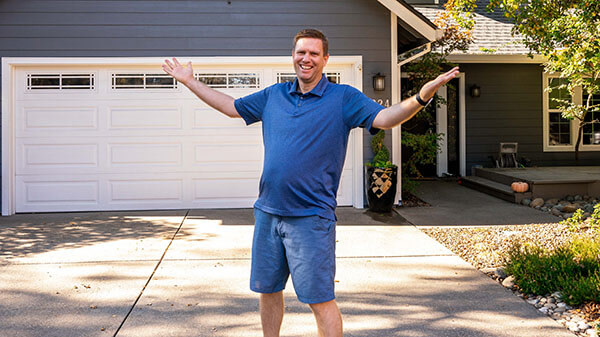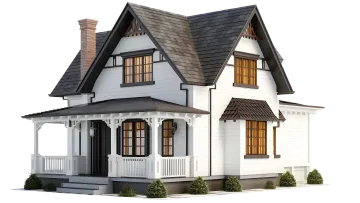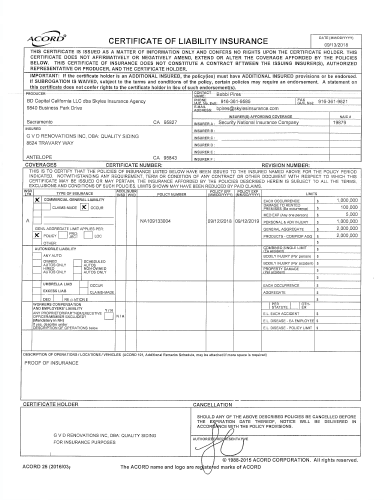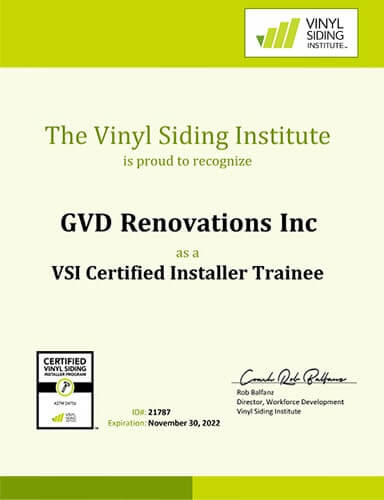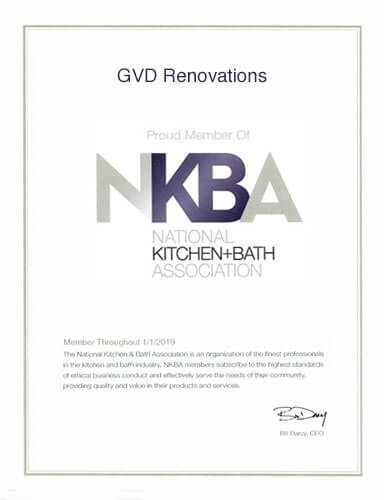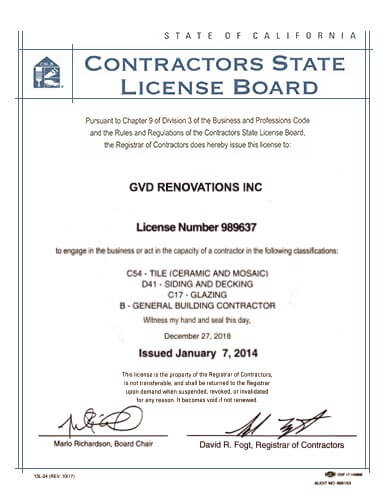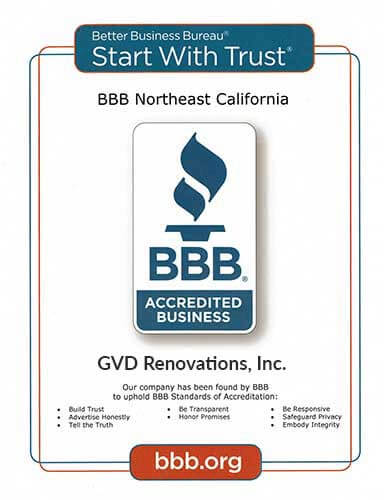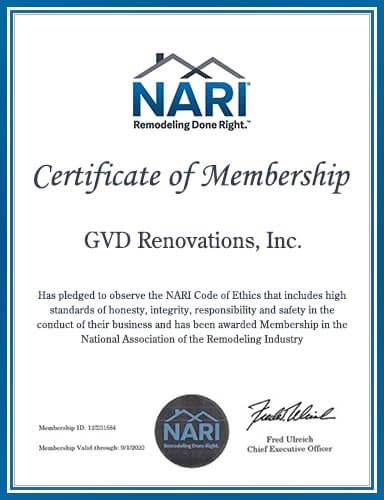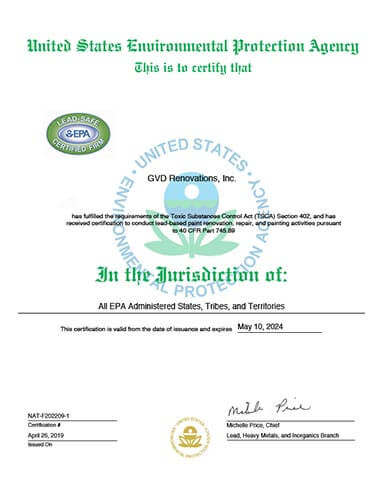(916) 269-0761

Replacement Windows in East Bay
Increase the beauty and value of your East Bay home with our replacement windows! Huge Selection Available! Choose GVD Renovations & Remodeling' East Bay window contractors for professional window installation & replacement services.


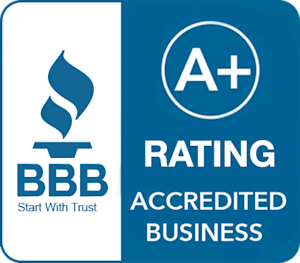

East Bay New & Replacement Windows Installation
We Install Replacement Windows that are Energy Star® Rated, Energy-Efficient Windows and Custom Fit for Your Home! Add comfort, improve your home's value and save on heating and cooling costs.
















Tap images to enlarge
See More Recent ProjectsWatch What Some of Our Clients Have to Say
East Bay Window Installers
Best East Bay Replacement Windows Contractor
Homeowners in East Bay often recognize the need for replacement windows well before they get around to replacing them. This is because most people are concerned about the cost of new windows, or they fail to realize how much money is leaking out of their home on a daily basis.
If you have old windows with poor seals, then replacing them will actually save you money. Sadly, many people don't even realize that their windows leak, but a simple inspection can ascertain whether replacement windows are right for you.
At GVD Renovations & Remodeling, our window installers offer full-service replacement window service - from initial inspection to product selection and installation. If you're ready to start saving money, give our window contractors a call today and find replacement windows that fit your needs, and your budget.
East Bay Window Installation Company
Our window installation process begins with a consultation with one of our East Bay home remodeling experts, who will assess your home's specific needs and provide recommendations on the best type of windows for your situation. We will then work with you to select the style, material, and features that meet your preferences and budget. Once you have made your selection, our team will handle the entire installation process from start to finish, ensuring that your new windows are installed correctly and on time.
Top Home Window Brands Offered by GVD Renovations & Remodeling
Anlin Windows in East Bay
Anlin Windows is a California-based window company that specializes in energy-efficient vinyl replacement windows. Anlin windows are made from high-quality materials and are designed to withstand extreme weather conditions. They are available in a variety of styles and colors to match any home's aesthetic. GVD Renovations & Remodeling is an Anlin Windows Authorized Dealer.
East Bay Marvin Windows
Marvin Windows is a Minnesota-based company that offers a wide range of window styles, including wood, fiberglass, and aluminum-clad windows. Marvin windows are known for their high-quality craftsmanship and attention to detail, making them a popular choice among homeowners.
Andersen Windows in East Bay
Andersen Windows is a well-known window company that has been in business for over 100 years. Andersen offers a variety of window styles, including vinyl, wood, and composite windows. Their windows are energy-efficient and are available in a variety of colors and finishes.
Milgard Windows in East Bay, CA
Milgard Windows is a California-based company that offers a wide range of window styles, including vinyl, wood, and fiberglass windows. Milgard windows are known for their durability and energy efficiency, making them a popular choice among homeowners looking for high-quality windows.
East Bay Simonton Windows
Simonton Windows is a Texas-based window company that specializes in vinyl replacement windows. Simonton windows are designed to be energy-efficient and durable, making them a popular choice among homeowners looking to improve their home's energy efficiency.
Top Rated Replacement Windows Installers in East Bay
Because we offer a full line of products, you can also consider the overall design and aesthetic quality of the windows we install in your home. Our quality window products include:
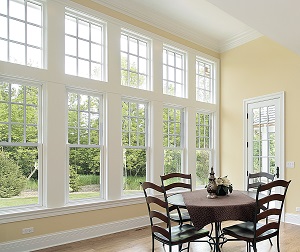
- Single Hung Windows
- Double-Hung Windows
- Picture Windows
- Sliding Windows
- Casement Windows
- Awning Windows
- Bay Windows
- Bow Windows
If you have questions about what windows are right for you, give us a call and a sales manager will be happy to answer your questions and assist you in any way possible.
Cost to Install New Windows in East Bay
The cost to install new home windows can vary depending on a variety of factors, including the type of windows you choose, the size of your home, and the complexity of the installation process.
On average, homeowners in East Bay can expect to pay between $500 and $1,000 per window for installation costs alone. This means that the total cost to install new windows in a standard-sized home can range from $5,000 to $15,000 or more. However, it's important to note that these figures are just estimates and your actual costs may vary based on your specific needs and circumstances.
Factors that can impact the cost of window installation include the type of window you choose, the size of your home, the number of windows you need, and any additional features or upgrades you choose. For example, custom-made windows or high-end materials can significantly increase the cost of installation, while basic vinyl or fiberglass windows may be more affordable.
It's also important to consider the long-term benefits of installing new windows, such as increased energy efficiency and improved curb appeal. While the initial cost of installation may seem high, the potential savings on energy bills and the added value to your home can make it a worthwhile investment.
Retrofit vs New Construction Windows in East Bay
When it comes to replacing windows in your home in East Bay, there are two primary options: retrofit or new construction windows. Each option has its own advantages and disadvantages, and the best choice for you will depend on your specific needs and circumstances.
Retrofit windows, also known as replacement windows, are designed to fit into your existing window frames without the need for major modifications to your home's structure. This makes them a popular choice for homeowners who want to upgrade their windows without undergoing a full-scale renovation. Retrofit windows are typically less expensive than new construction windows and can be installed more quickly, making them a good option for those on a tight budget or timeline.
New construction windows, on the other hand, are designed for use in new homes or major renovation projects where the existing window frames are being removed. They require more extensive installation work and may involve changes to the exterior siding or trim of your home. However, new construction windows offer greater flexibility in terms of design and can be customized to fit your specific preferences and needs.
In terms of energy efficiency, both retrofit and new construction windows can offer significant improvements over older, outdated windows. However, new construction windows may provide slightly better performance due to the ability to install them with proper insulation and flashing.
Ultimately, the choice between retrofit and new construction windows will depend on your specific needs and preferences. Retrofit windows are a good option for those looking for a quick and affordable upgrade, while new construction windows may be better suited for those undergoing a major renovation or building a new home.
Best East Bay Replacement Windows Company
At GVD Renovations & Remodeling, we don't just sell replacement windows, we offer complete installation as a local contractor. This means you can order your windows from the comfort of your own living room, and arrange a date and time for window installation that works best with your busy schedule.
Our contractors will even haul away, and dispose of, your old windows, making the whole process effortless and hassle-free. Your new windows will withstand the pitfalls of your existing windows, eliminating your stress and worry while significantly lowering your power and home heating costs.
Additionally, new windows will increase the overall value of your home, and you never have to be concerned whether they will warp or rot over time.
Whether you are performing a historic remodeling of your home, or simply seeking to cut your energy costs and eliminate unwanted drafts, GVD Renovations & Remodeling has replacement windows that will conform to the parameters of your budget.
Free Estimate On Your Next East Bay Replacement Windows Project
When you drive up to a home and it isn’t aesthetically pleasing, your eye has a tendency to look away to more attractive looking homes. There is no reason why your home should not be one of the most appealing homes in your neighborhood. Sometimes a simple change of a door can change the whole image of your home. Siding, countertops, windows, doors, pavers or maybe the addition of a porch can give your home a new lease on life. Contact GVD Renovations & Remodeling today and work with our professional contractor's to see what options await you to make your home stand out in your neighborhood. Don’t hesitate to call us today for your free in-home estimate!
Other Service Areas
- Alameda
- Alamo
- Albany
- Alta Sierra
- American Canyon
- Angels Camp
- Antelope
- Antioch
- Apple Hill
- Applegate
- Arden Arcade
- Arnold
- Auburn
- Bay Area
- Belmont
- Benicia
- Berkeley
- Blackhawk
- Bodega Bay
- Brentwood
- Burlingame
- Calistoga
- Cambrian Park
- Cameron Park
- Campbell
- Carmichael
- Castro Valley
- Chico
- Citrus Heights
- Clayton
- Clear Lake
- Colfax
- Concord
- Cool
- Cordelia
- Corte Madera
- Cotati
- Cupertino
- Daly City
- Danville
- Davis
- Diamond Springs
- Discovery Bay
- Dixon
- Dublin
- East Bay
- El Cerrito
- El Dorado Hills
- El Macero
- El Sobrante
- Elk Grove
- Elverta
- Emeryville
- Fair Oaks
- Fairfax
- Fairfield
- Florin
- Folsom
- Foresthill
- Foster City
- Fremont
- Galt
- Gilroy
- Gold River
- Granite Bay
- Grass Valley
- Greenwood
- Half Moon Bay
- Hayward
- Hercules
- Hidden Valley Lake
- Ione
- Isleton
- Jackson
- Kentfield
- La Riviera
- Lafayette
- Lake of the Pines
- Lakeport
- Larkspur
- Lincoln
- Livermore
- Lodi
- Loomis
- Los Altos
- Los Gatos
- Lower Lake
- Manteca
- Marin City
- Martinez
- Marysville
- McClellan
- Meadow Vista
- Menlo Park
- Mill Valley
- Millbrae
- Milpitas
- Moraga
- Morgan Hill
- Mountain View
- Murphys
- Napa
- Natomas
- Nevada City
- Newcastle
- North Bay
- North Highlands
- Novato
- Oakland
- Oakley
- Orangevale
- Orinda
- Pacifica
- Palo Alto
- Paradise
- Penn Valley
- Penryn
- Petaluma
- Piedmont
- Pilot Hill
- Pinole
- Pittsburg
- Placerville
- Pleasant Hill
- Pleasanton
- Plumas Lake
- Pollock Pines
- Rancho Calaveras
- Rancho Cordova
- Rancho Murieta
- Redwood City
- Rescue
- Richmond
- Rio Linda
- Rio Vista
- Rocklin
- Rodeo
- Rohnert Park
- Rosemont
- Roseville
- San Andreas
- San Anselmo
- San Bruno
- San Carlos
- San Jose
- San Leandro
- San Mateo
- San Pablo
- San Rafael
- San Ramon
- Santa Clara
- Santa Cruz
- Santa Rosa
- Saratoga
- Sausalito
- Scotts Valley
- Sebastopol
- Sheridan
- Shingle Springs
- Sloughhouse
- Sonoma
- South Lake Tahoe
- South San Francisco
- St. Helena
- St. Helena
- Stanford
- Stockton
- Suisun City
- Sun City Lincoln Hills
- Sun City Roseville
- Sunnyvale
- Sutter Creek
- Tahoe City
- Tiburon
- Tracy
- Truckee
- Union City
- Vacaville
- Vallejo
- Valley Springs
- Vineyard
- Walnut Creek
- West Sacramento
- Wheatland
- Wilton
- Windsor
- Winters
- Woodland
- Yountville
- Yuba City
Frequently Asked Questions about Replacement Windows in East Bay
The East Bay, California, comprises the cities along the eastern shores of the San Francisco and San Pablo bays. This region defines Northern California's urban lifestyle with its bustling cities, suburban communities, industrial landscapes, and expanses of agricultural land. East Bay, which includes cities like Oakland and Berkeley, offers a diverse culture, dynamic food scenes, sports, innovative arts, and vibrant music. It is also home to the University of California, Berkeley—the oldest campus in the University of California system. The East Bay is known for its warm, sunny weather and breathtaking views of the bay, the Pacific Ocean, and the Golden Gate Bridge.
In East Bay, CA, the average median home price is competitive, reflective of California's overall high cost of living. Here, you'll find a variety of homes, from historic Victorian and Edwardian properties to modern condominiums and townhouses. Buying a home in East Bay is an investment, owing to the region's appealing lifestyle and the continuous growth in property values.
What should I look for when hiring window replacement contractors in East Bay?
You should prioritize experience, reputation, and a commitment to quality when hiring window replacement contractors in East Bay. Ensure they have a strong track record of delivering quality work, testimonials from satisfied customers, and a portfolio showcasing their past projects. It is also recommended to go for contractors that offer a comprehensive service, from consultation to installation, and beyond.
Does East Bay require building permits for window replacement?
In East Bay, building permits are generally required for window replacements. It is essential to check with your contractor or local building authority to understand the specific requirements and procedures. Compliance with the local codes not only ensures safety but also helps avoid potential legal issues in the future.
Can you provide references or examples of past work in East Bay?
Yes, as a leading renovation company, GVD Renovations can provide references and examples of our past work in East Bay. Over the years, we have worked on many different projects, each tailored to the specific needs and preferences of our clients. We take pride in delivering exceptional service and the highest quality workmanship for our clients.
Will window replacement in East Bay increase my home's value?
Yes, window replacement in East Bay can significantly increase your home's value. Updated windows improve your home's energy efficiency, aesthetics, and comfort, making it more appealing to potential buyers. A house with newly replaced windows often commands a higher selling price than one with outdated or damaged windows.
Why is GVD Renovations the best East Bay window replacement company?
At GVD Renovations, we are committed to providing the highest quality window replacement services in East Bay. We understand that every home is unique, and we tailor our services to meet your specific needs and preferences. Our experienced and skilled team uses top-of-the-line materials and innovative techniques to ensure that you get the best results. We uphold rigorous quality standards and strive for complete customer satisfaction in every project. Trust us with your window replacement needs, and we assure you a home that is not only beautiful but also energy efficient and comfortable.






